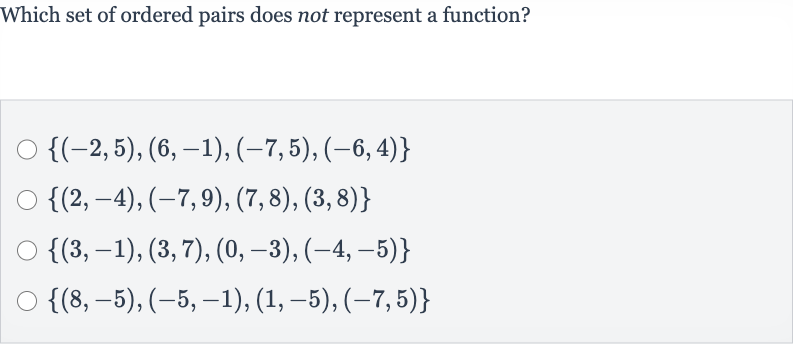Full solution
Q. Which set of ordered pairs does not represent a function?
- Define function as relation: A function is defined as a relation where each input ( extit{x}-value) has exactly one output ( extit{y}-value). To determine which set of ordered pairs does not represent a function, we need to check if there are any repeated extit{x}-values with different extit{y}-values in each set.
- Examine first set: Let's examine the first set: . We need to check if any -value is repeated with a different -value. and have different -values, so they are fine. and also have different -values. There are no repeated -values with different -values in this set.
- Examine second set: Now, let's examine the second set: . Again, we check for repeated -values with different -values., , , and all have unique -values. There are no repeated -values with different -values in this set.
- Examine third set: Next, we examine the third set: . Here, we immediately see that the x-value is repeated with different y-values: and . and indicate that the same x-value has two different y-values, which violates the definition of a function.
- Examine fourth set: Finally, let's examine the fourth set: . We check for repeated -values with different -values., , , and all have unique -values. There are no repeated -values with different -values in this set.
More problems from Write a quadratic function from its x-intercepts and another point
QuestionGet tutor help
QuestionGet tutor help
QuestionGet tutor help
QuestionGet tutor help
QuestionGet tutor help
QuestionGet tutor help
QuestionGet tutor help
QuestionGet tutor help

